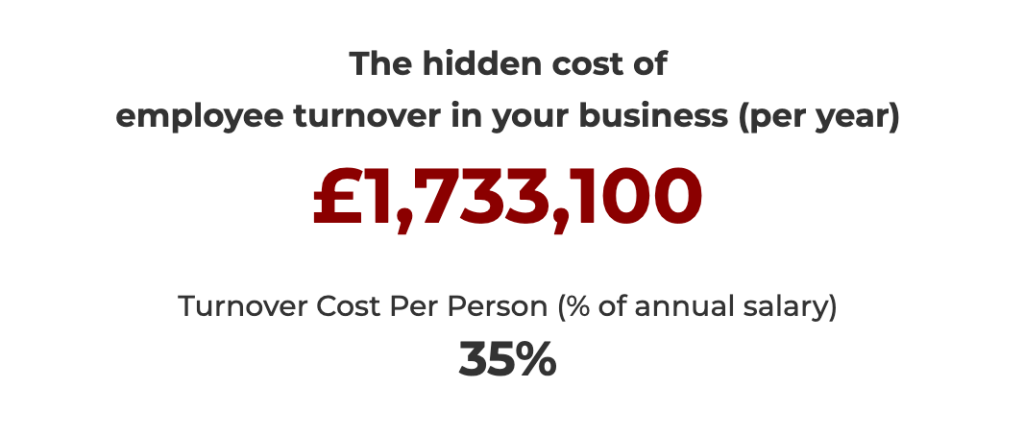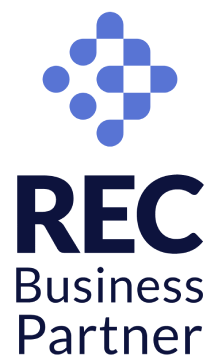Right, let’s be honest. Only 21% of employees globally feel truly engaged at work – that’s a rather low number! [1] As HR champions, we know a happy, motivated team is a game-changer. But convincing the higher-ups of the value of employee engagement initiatives can sometimes feel like explaining advanced calculus to a puppy. This is why building some form of an employee engagement ROI calculator comes in handy! Presenting the clear figures is great way to get buy-in.
The good news? ROI isn’t just about cold, hard cash. It’s about unlocking the potential of your incredible employees. We’re talking a team that’s brimming with ideas, smashing goals, and making your customers rave about your service. So, let’s ditch the spreadsheets for a moment and create our own employee engagement ROI calculators to explore and measure the impact of a truly engaged team:
1. Feeling the pulse: Gauging employee satisfaction
Imagine your team as a high-performing orchestra. Each member contributes their unique talent to create a harmonious whole. To ensure everyone’s in sync, regularly assess employee sentiment through quick surveys and engagement assessments. These provide valuable insights into employee needs, frustrations, and overall satisfaction. A strong Net Promoter Score (eNPS) indicates a workforce that’s not only content but actively promotes your company as a great place to work.
2. Productivity powerhouse: Unleashing your team’s potential
When everyone’s motivated and engaged, watch out – things get done! Track key metrics like sales figures and performance reviews to identify correlations between engagement efforts and output. Engaged employees are intrinsically motivated, leading to increased efficiency and consistently high-quality work.

3. Understanding turnover: Beyond the revolving door
High turnover can be a symptom of disengagement, but it’s not the sole culprit, and usually not the cause. Limited growth opportunities or an unsustainable work-life balance might be at play. Delving deeper into exit interviews or stay interviews can reveal the underlying reasons for employee departures. While a reduced turnover rate is a positive indicator, consider other factors as well. Your team is your core asset, and fostering an environment where individuals feel valued and fulfilled is paramount.
If you want to calculate exactly how much turnover might be costing your business, take a look at our easy to use calculator.
4. Tackling absenteeism: More than just clocking in
Absenteeism can signal disengagement, but it can also point to burnout or personal challenges. Instead of resorting to punitive measures, prioritise a flexible working environment that empowers employees to manage their well-being effectively. Encourage them to utilise paid time off for rest and rejuvenation. Peak performance requires adequate time for recovery.
5. Building a culture of excellence: The quality check
Engagement isn’t just about quantity, it’s about quality too. Set clear, achievable goals and track completion rates. Celebrate milestones and acknowledge individual and team achievements. When employees feel invested in the organisation’s success, they’ll strive to consistently produce exceptional work. Imagine your people as a team of master craftspeople – their focus will be on delivering top-notch results, not simply completing tasks.
6. Happy customers, happy team: The customer satisfaction connection
When a team feels valued and supported, their enthusiasm translates into a commitment to exceeding customer expectations. Track customer satisfaction scores (CSAT, NPS, CES) and analyse correlations with your engagement efforts. A highly engaged customer service team translates to a loyal customer base.
7. Finalising your employee engagement ROI calculator: It all comes together
Bringing it all together can be tricky. But with a combination of qualitative and quantitative data, you can put togetheer some form of an employee engagement ROI calculator.
Let’s be frank – happy employees are good for business. Track your profit margin ratios and compare them against industry benchmarks and your employee engagement efforts. Look for patterns that suggest a correlation between a more engaged workforce and a healthier bottom line. When everyone is working in unison, the possibilities for growth are limitless!
The final note: Beyond numbers, building a thriving workplace
Measuring employee engagement ROI isn’t about a single metric. It’s about nurturing a vibrant work environment where individuals feel valued, motivated, and empowered to reach their full potential. By adopting a holistic approach that considers diverse aspects of employee well-being and performance, you unlock the true magic of a highly engaged team – a team that drives organisational success and creates a truly fulfilling workplace.
Source:
[1] Gallup, 2022





